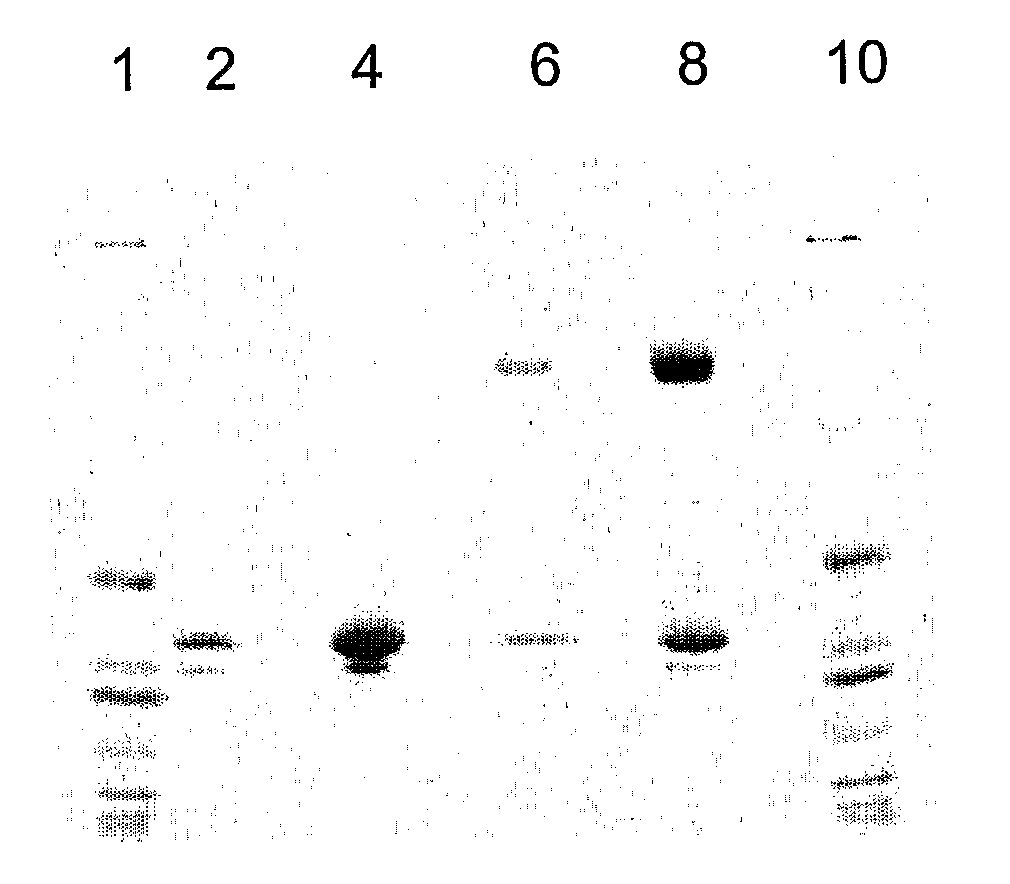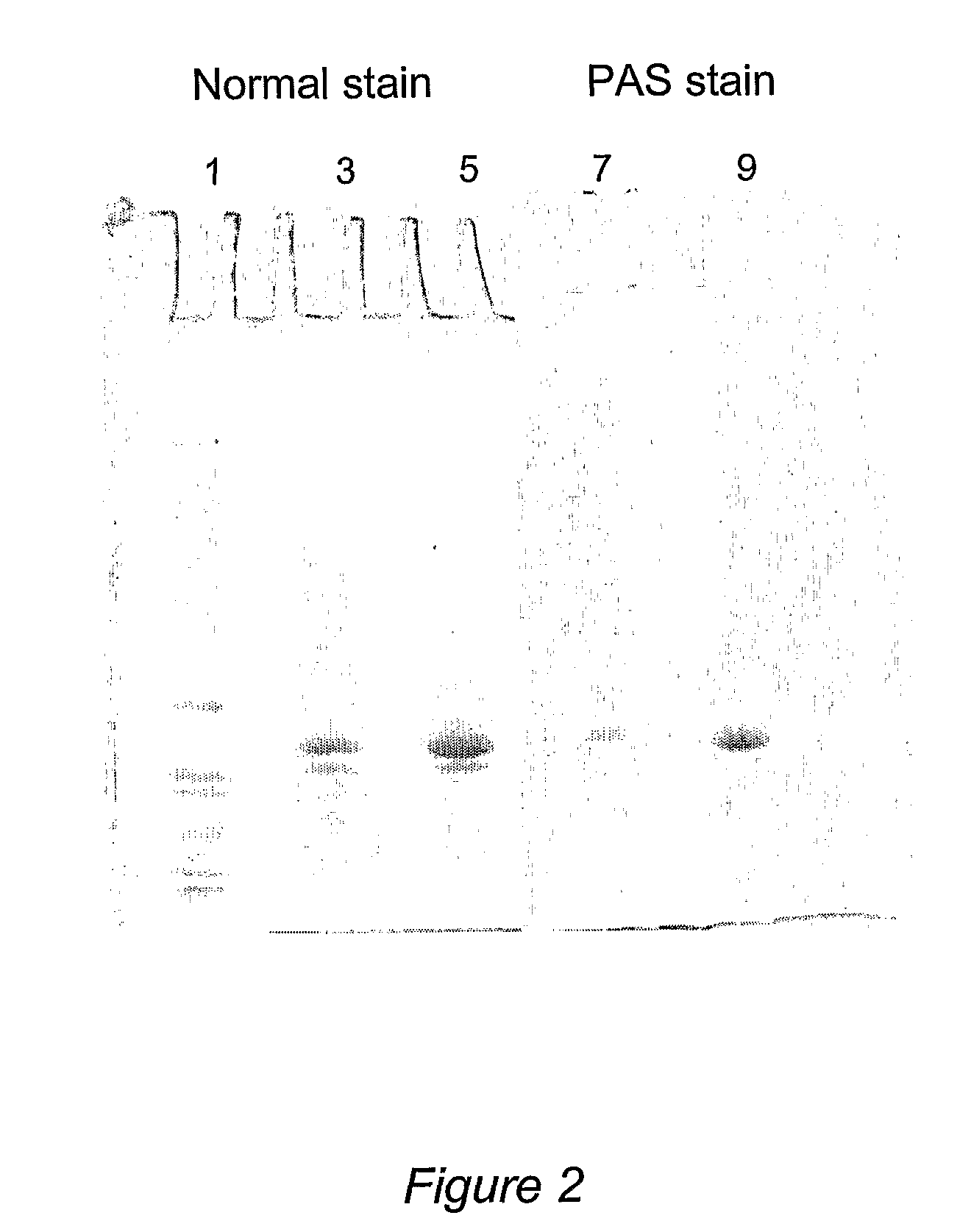Method to Reduce Oxalate Concentration by Administration of Oxalate Oxidase Crystals
a technology of oxalate oxidase and crystals, which is applied in the direction of anti-noxious agents, drug compositions, peptide/protein ingredients, etc., can solve the problems of poor heart function, pain, and abnormal heart rhythm or poor heart function, and the existing methods for treating elevated oxalate levels are not always effective, so as to reduce the damage caused
- Summary
- Abstract
- Description
- Claims
- Application Information
AI Technical Summary
Benefits of technology
Problems solved by technology
Method used
Image
Examples
example 1
Recombinant Production of Oxalate Oxidase
[0101]In Human Embryonic Kidney (HEK293) cells: DNA encoding OXO is cloned into a suitable expression vector. After sequence confirmation, the vector can be linearized and transformation of the linearized vector to pre-seeded HEK293 cells may be carried out using Lipofectamine™ 2000 Transfection Reagent in a 6 cm diameter dish. After culturing approximately overnight after the transfection in appropriate medium, transformants are selected in medium supplemented with 0.5 g / L of neomycin. Stably transfected HEK293 cell clones are identified after growth in neomycin containing medium for up to 3 weeks. The clones are then isolated and propagated, and used for OXO expression.
[0102]In Chinese Hamster Ovary (CHO) cells: DNA encoding OXO gene is cloned into a suitable expression vector. Cultured CHO lec 3.2.8.1 cells are then detached by trypsin digestion and harvested by centrifugation. The cells are then suspended in Electroporation phosphate buff...
example 2
Purification of OXO
[0107]OXO was purified from 5 L of pooled expression medium [from where?] and diafiltered against 20 mM phosphate buffer (pH 7.0). After 10-fold concentration of the expression medium, 100 ml of a 50% slurry of DE52 anion exchanger resin was added, and the mixture was stirred for 1 hour at 4° C. Oxalate oxidase does not bind to the DE52 resin which was separated by centrifugation. The medium, was than diafiltered against 50 mM succinate buffer (pH 4.5). The diafiltered preparation was then loaded onto a SP Sepharose™ cation exchange column, from which bound OXO was eluted with a linear gradient of 1 M ammonium sulfate in 50 mM succinate buffer. Each fraction was assayed for oxalate oxidase activity; active fractions were pooled. See Table 1.
TABLE 1Recombinant OXO Purification from shake flaskConcen-TotalSpecificVolumetrationProteinActivityYield(ml)(mg / ml)(mg)(unit / mg)(%)Expression Medium60005.6834,0750.07100Post TFF Pool4607.183,3040.6170.8DE52 Unbound3904.321,685...
example 3
Purification of OXO (Large Scale)
[0109]Method A: Expression medium from a 400 L yeast culture was diafiltered against 20 mM phosphate buffer (pH 7.0) and concentrated to a volume of about 20 L. The concentrated medium was stored frozen until purification. The purification of oxalate oxidase was carried out by diafiltration of 9560 ml concentrated expression medium against 50 mM citrate phosphate buffer (pH 4.0) and subsequent concentration to a volume of 2520 ml. Protein contaminants that precipitated during the process were removed by centrifugation. The supernatant was filtered through a 0.22 μm filter prior to loading onto a 5×45 cm SP Sepharose™ cation exchange column. Bound OXO was eluted with linear gradient of 0-100% 50 mM citrate phosphate buffer (pH 8.0) over six bed volumes. Over 4.7 g of purified oxalate oxidase was obtained with this two-step procedure, with a yield of 53%. The purification process was summarized in Table 2. The purified OXO has a specific activity of 10...
PUM
| Property | Measurement | Unit |
|---|---|---|
| apparent molecular weight | aaaaa | aaaaa |
| pH | aaaaa | aaaaa |
| diameter | aaaaa | aaaaa |
Abstract
Description
Claims
Application Information
 Login to View More
Login to View More - R&D
- Intellectual Property
- Life Sciences
- Materials
- Tech Scout
- Unparalleled Data Quality
- Higher Quality Content
- 60% Fewer Hallucinations
Browse by: Latest US Patents, China's latest patents, Technical Efficacy Thesaurus, Application Domain, Technology Topic, Popular Technical Reports.
© 2025 PatSnap. All rights reserved.Legal|Privacy policy|Modern Slavery Act Transparency Statement|Sitemap|About US| Contact US: help@patsnap.com



